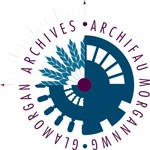Baltic House dates from about 1915, when it replaced 17, 18 and 19 Mount Stuart Square, in a prominent position directly opposite the main entrance of the Coal Exchange. The architects were Teather & Wilson and their client was Claude P Hailey, a local accountant who later donated the land for Hailey Park in Llandaff North.

Having five storeys plus a basement, the building is oddly asymmetric in appearance, with a more ornate bay at the eastern end. The approved building plan shows that it was originally intended to balance this with a western extension which has clearly never been executed.
The earliest occupants included Mr Hailey’s accountancy partnership with Sir Joseph Davies, and Mount Stuart Square Office Co Ltd, which appears to have been the building’s management company. Business Statistics Publishing Co Ltd and the Incorporated South Wales and Monmouthshire Coal Freighters Association – both closely associated with Davies and Hailey – were also based there. Other tenants were generally coal exporters or shipping companies. From the outset until at least the mid-1950s, there was a café on the lower ground floor. While developing patterns of business saw changes in occupancy over the years, Baltic House continued to house a number of shipping and travel companies well into the 1960s.
During the 1990s, Baltic House was the principal office of Cardiff Bay Development Corporation as it masterminded the regeneration of the city’s rundown docklands and waterfront. More recently, it has housed the Wales Council for Voluntary Action, along with a number of other third sector organisations.
David Webb, Glamorgan Archives Volunteer
Sources consulted:
- Mary Traynor Collection (ref.: D1093/1/6)
- Cardiff Borough Records, plans for offices, Mount Stuart Square, 1913 (ref.: BC/S/1/18776)
- Evan Thomas, Radcliffe and Company, Shipowners, Cardiff Records, lease (counterpart) for term of 21 years, 1916 (ref.: DETR/92/1-3)
- Various Cardiff Directories
- Cardiff Year Book 1921
- Wales Yearbook 2000
- http://www.friendsofhaileypark.org.uk/claude-hailey.html
- http://www.wcva.org.uk/



